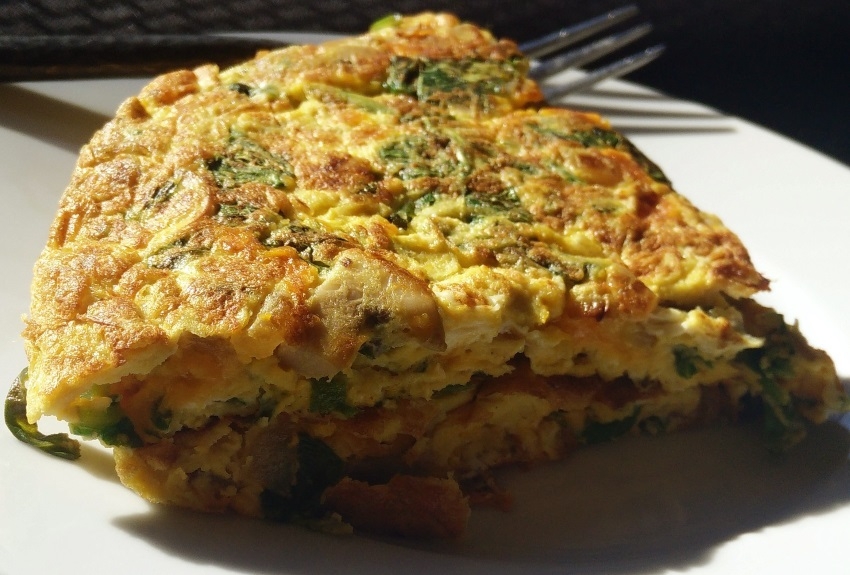Reading comprehension - Pre-Intermediate level
Bubble and Squeak!
This doesn't sound like food but in fact it is a really delicious way of using uneaten food from the previous day. The dish is called 'bubble and squeak' because the vegetables make these comical sounds as they cook. Imagine a British family cooking a big roast dinner on a Sunday. If they prepare and cook too many vegetables they may keep them in the fridge overnight. (These can be a mixture of chopped roast potatoes, mashed potato, cabbage, swede, Brussels sprouts, peas, carrots and other root vegetables.) Then the next day they are first mashed with a potato masher and afterwards shallow fried in a large frying pan until the edges are golden. Bubble and squeak may be eaten with cold sliced meat from the day before, or topped with grated Cheddar cheese or perhaps slices of bacon and fried eggs, plus traditional brown sauce which is slightly spicy.
The dish began as a low cost but tasty main meal for families on a small budget. The earliest recipe dates back to 1806 but it became particularly popular during the Second World War when it was important not to waste any food. However, nowadays bubble and squeak is often appreciated as an enjoyable treat with lots of colour and flavour. You can also find it in the freezer section in most supermarkets but it never seems as good as the homemade version.
Porridge
Porridge is a breakfast dish made by boiling crushed oatmeal (oat grains) in milk or water. It is often served with flavourings such as sugar, honey, syrup etc. to make a sweet cereal. It is usually served hot in a bowl perhaps with the addition of either dried fruit or fresh fruits like cranberries or blueberries.
Recently a survey by Harvard University indicated that eating whole grains may be the key to living a longer life so porridge has suddenly become more popular. You can often see it in supermarkets and hotels in small convenient pots to eat cold for breakfast or as a healthier snack.
Eating porridge can help to reduce high blood pressure and bad cholesterol while providing a slow-release source of energy for the athlete or fitness fan if eaten an hour before exercise.
Haggis
Haggis is a traditional Scottish dish made with minced sheep's heart and other organs combined with finely chopped onion, oatmeal, suet (animal fat), spices (coriander, black pepper, mace and nutmeg) plus salt. These ingredients are mixed together with enough stock (cooking water from meat) to moisten the whole mixture and give it a soft crumbly feel. It was originally placed in an empty sheep's stomach before cooking but today it usually comes in an artificial bag made of sausage skin. This bag is then closed and boiled in water for about 3 hours. When cooked, the mixture is spooned onto a plate and traditionally served with 'neeps' (mashed swedes or turnips) and 'tatties' (mashed potatoes).
For hundreds of years Haggis was a useful way for Scottish farmers to use all parts of the sheep at a time when people did not have much food. However, it still makes a very rich and satisfying main dish which is often eaten at traditional Burns Night celebrations. A Burns Night Supper is held on or near 25th January, the birthday of the Scottish poet Robert Burns, to celebrate his many poems.
Some people joke that the dish comes from the 'wild haggis' - an imaginary animal with right and left legs of different lengths. But this is not true!
Internet sources
Wikipedia: Bubble and Squeak. Available from: https://en.wikipedia.org/wiki/Bubble_and_squeak {5/2/2018}
Wikipedia: Porridge. Available from: https://en.wikipedia.org/wiki/Porridge {5/2/2018}
BBC: BBC Food Quick Recipe Folder- Haggis. Available from: https://www.bbc.co.uk/food/recipes/haggis_66072 {18/2/2018}
Oakden: Haggis/Traditional Recipe. Available from: http://oakden.co.uk/haggis-traditional-recipe {18/2/2018}
Would you taste these British foods? - Comprehension questions
1. Why is 'bubble and squeak' called by this name?
2. What is the year of the oldest recipe for bubble and squeak?
3. What is the main ingredient of porridge?
4. What part of the sheep is the principal ingredient of haggis?
Would you taste these British foods? - Comprehension questions
1. Why is 'bubble and squeak' called by this name?
Because the vegetables make these funny noises as they cook.
2. What is the year of the oldest recipe for bubble and squeak?
1806
3. What is the main ingredient of porridge?
Crushed oatmeal
4. What part of the sheep is the principal ingredient of haggis?
The sheep's heart



